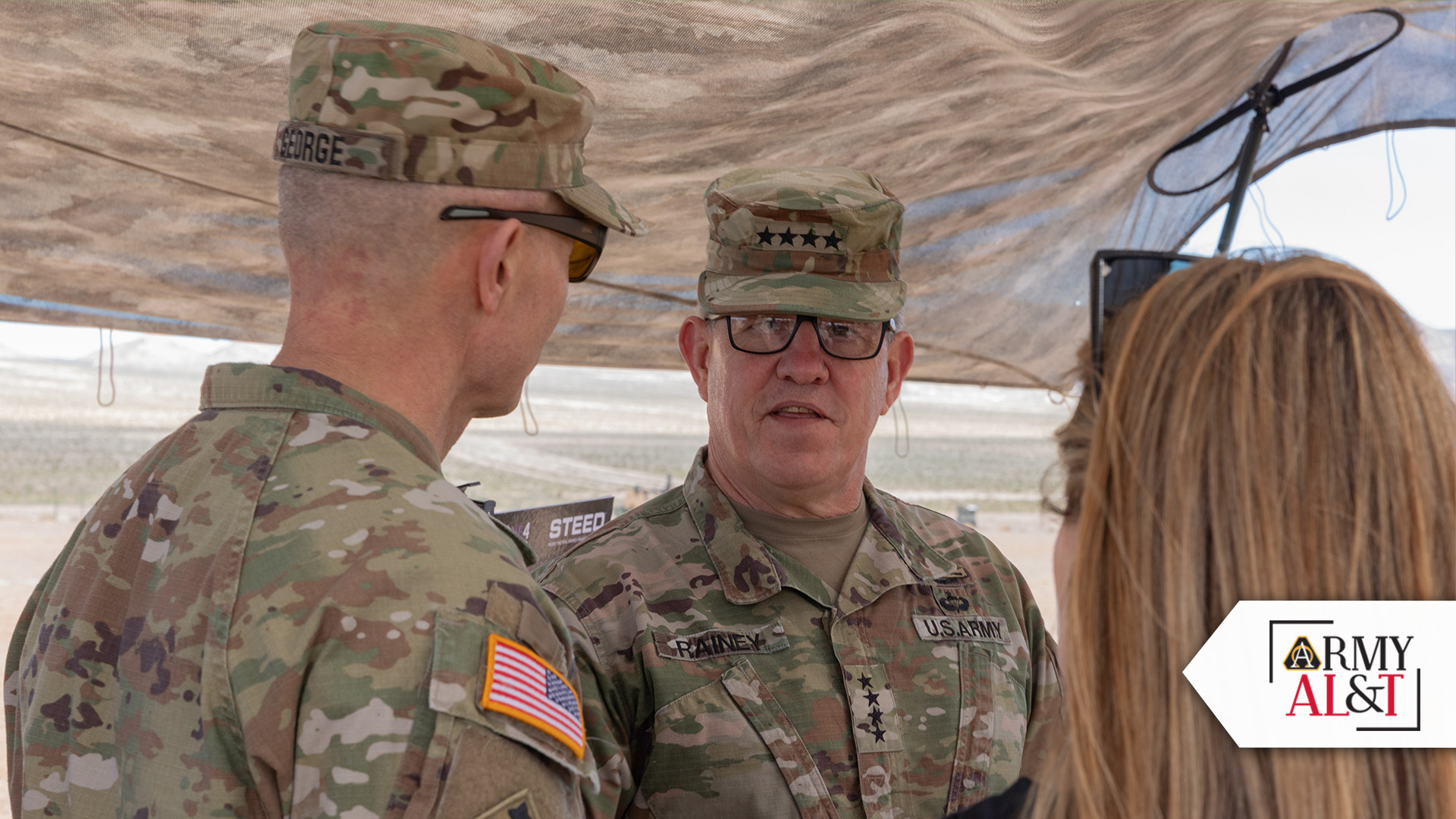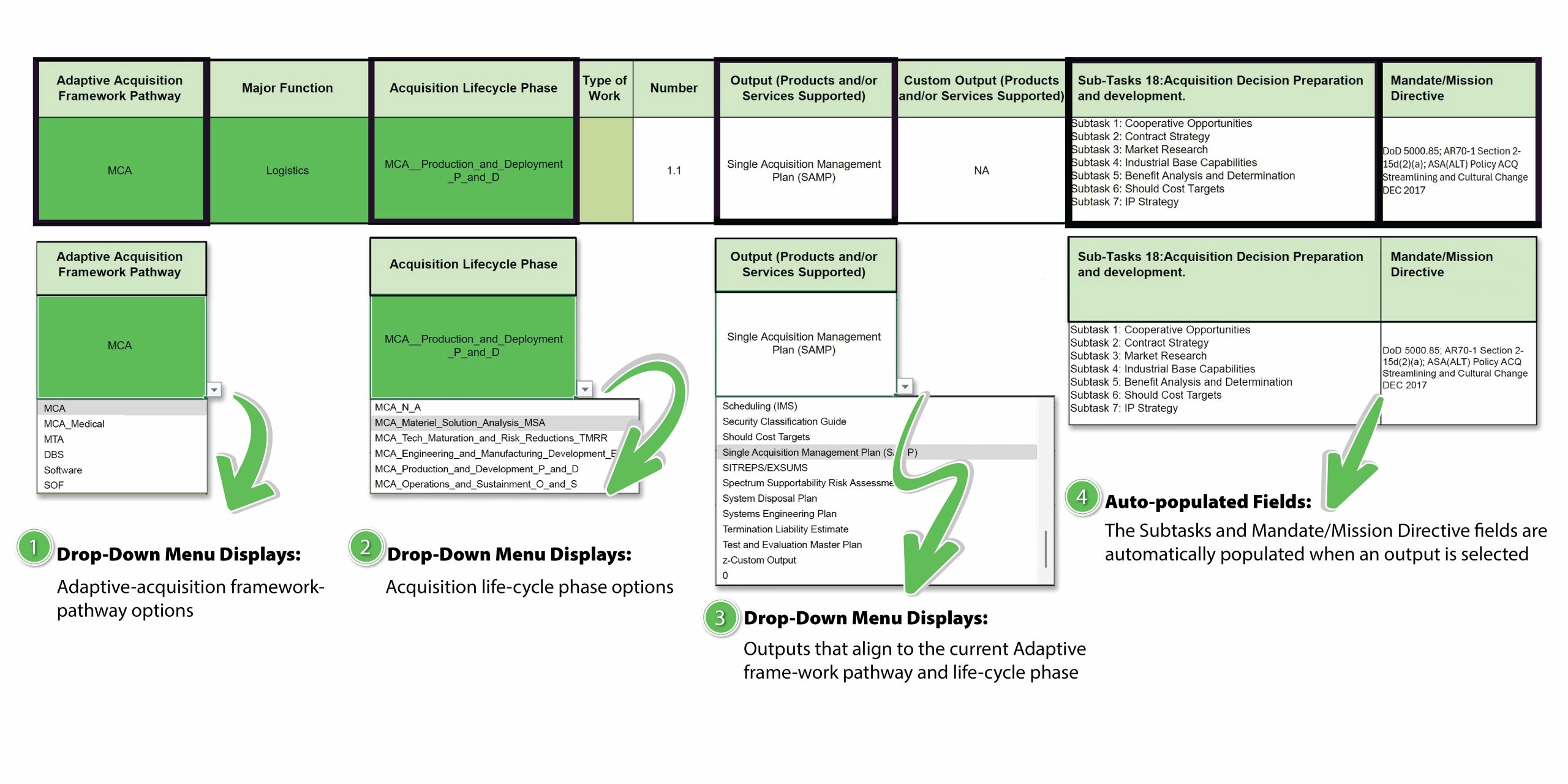
MAKE IT BRIEF: Gen. James E. Rainey, the commanding general of Army Futures Command, briefing U.S. Army Gen. Randy A. George, chief of staff of the Army. George uses the term “transforming in contact” while Rainey says, “continuous transformation.” Both terms are in reference to an agile workforce. (Photo by Sgt. Brahim Douglas, 24th Theater Public Affairs Support Element)
by Col. Matthew G. Clark and Lt. Col. Edwin Kolen
Since ancient times, great militaries have needed to figure out how to effectively manage manpower in the face of ever-evolving technology. Today’s challenge is meeting the speed of transformation—at the speed of relevance.
For the U.S. Army, current manpower modernization and operational processes are inflexible and slow, often taking more than two years to complete. They don’t consider future workloads. There are limited metrics and no means to apply rigor to promote a quality workforce, which result in manpower structures without the requisite expertise to adapt in a rapidly changing environment. All of which makes it extremely challenging to achieve effective defense planning and programming.
So what’s the solution? We must apply an iterative, agile methodology to promote the continuous improvement needed to enable flexibility and adaptability in manpower management at the “speed of relevance” in the face of rapidly changing technologies and threats. Army Chief of Staff Gen. Randy A. George characterizes this as “transforming in contact.” Gen. James E. Rainey, commanding general of U.S. Army Futures Command, calls it “continuous transformation.”
However it’s termed, it’s clear that we must transform beyond Army materiel and build an “agile workforce.” The assistant secretary of the Army for acquisition, logistics and technology (ASA(ALT)) can achieve this objective through the current manpower analysis across acquisition formations. By applying an iterative, agile methodology to promote continuous improvement processes, flexibility and adaptability in manpower management can be achieved. Better still, it truly puts people first.
Our aim is to build on processes of the past, using a shared manpower workload worksheet (WLW) that we developed for the Joint Program Executive Office for Chemical, Biological, Radiological and Nuclear Defense (JPEO-CBRND). This WLW was presented at the ASA(ALT) Deputy Assistant Secretary of the Army (DASA) Program Executive Office (PEO) Summit on November 13, 2024. The WLW is a baselining tool for all PEOs and project managers (PMs) that empowers development of an agile workforce at echelon if used in a similar way across PEOs.
Our baselining approach also generates key performance indicators (KPIs) and objectives and key results (OKRs) at echelon. After identifying relevant stakeholders, the baseline helps conduct supply, demand and gap analyses that enable actionable plans for delivering the workforce for “transforming in contact, solving problems and seizing opportunities today”—as promoted by Rainey.
Our method provides an achievable vision and actionable process for realizing a sustainable and agile workforce that is more responsive to security needs while employing lessons from the digital industry and economy. By focusing on quality at the speed of relevance, it empowers goal setting at all organizational levels, instead of using a coercive, top-down approach that hinders meaningful transformation.
A BUILDING BLOCK FOR PLANNING
Our WLW baselined manpower requirements for completing program activities and operations follow applicable laws, policies and regulations (with a focus on deliverable outputs). ASA(ALT) and the U.S. Army Manpower Analysis Agency provided guidance and a simplified spreadsheet to capture manpower, but we quickly realized the need to re-build the worksheet to cover all aspects of acquisition operations, including exploiting the Adaptive Acquisition Framework.
The WLW needed to support strategic to tactical workforce planning and enable thorough workforce supply, demand and gap analyses. JPEO-CBRND employed a workforce stand-down led by the authors and key personnel from PEO staff to develop the tool that we propose is useful for the entire Army Acquisition Workforce. It is a building block that starts from the functional product office level and, through aggregation, goes through PEOs and ASA(ALT) for planning at echelon.
Creating the WLW was not without its difficulties. The first problem encountered was developing the WLW to serve as a tool for establishing a baseline across ASA(ALT). The challenge was how to create a defendable foundation to measure workload, phases of operations, tasks and outputs, as well as one that works for all programs regardless of mission and structure. The JPEO, uniquely situated for this task, took the approach of identifying what constraining and limiting factors affect all PEOs and acquisition programs. The JPEO-CBRND team initially used laws, policies, regulations, mandated program activities, deliverables and processes for programs specified in Adaptive Acquisition Framework Pathways to bound available work activities. Our WLW graphic highlights some of the key aspects of the WLW and shows the dropdown menus that facilitate its successful completion by work centers.
After identifying unifying work outputs and activities across the Army, we used laws, policies and regulations to define associated activity criteria as written guidance for why these activities occurred and the authorities provided to execute success (see “Mandate/Mission Directive” column in Figure 1). These became the WLW’s “North Star” in developing an output-oriented framework: The foundation was now defendable because all activities and subtasks supporting mandates or mission directives were aligned to a higher guidance, regulation, policy and law. This ended up being notable, even for those who faced diminished planning, programming and budgeting requirements despite having clear outputs.
The next challenge was quantifying echelons of support by creating products that reference support at appropriate levels (e.g., O-5/GS-14, O-6/GS-15 and JPEO). This ensured that the required support was available to a workforce that operated at all echelons; however, by recognizing all contributions, it also prevented a one-size-fits-all approach to product development and empowered operational levels to quantify manpower requirements to complete the previous year’s work (being directed to examine the previous year’s activities).

TRANSFORMING IN CONTACT: In a process ranging from sticky notes to a customized and templated Excel spreadsheet providing outputs of more than 450 datapoints, CBRN Medical created a defendable foundation in which to measure workload, phases of operations, tasks and outputs. It will work for all programs regardless of mission and structure. (Photo by Lt. Col. Edwin Kolen, JPEO-CBRND)
WHAT GETS MEASURED, MATTERS
The most important capability that the WLW provided was the ability to measure the manpower required for tasks. That’s because what gets measured, matters. Measuring the right kind of manpower not only demonstrates that it matters, but it is also required to win.
By incorporating the capabilities into the WLW, our tool can examine a previous year’s requirements and measure the manpower required to accomplish all tasks in approved program schedules. Once reviewed by at least one echelon above generation, we were able to validate the WLW as a baseline for the fiscal year, effectively illustrating how much work was accomplished. At baseline, we were able to analyze programs by type (e.g., acquisition, investment or workload master lists); work by type (e.g., direct, indirect, unfunded); acquisition life cycle phase, product or deliverable by type; and performance by sub-organization and acquisition function (e.g., business, contracting, cybersecurity, engineering, logistics, program management, test and evaluation, program and quality activities and production). We identified how much work by function was needed for respective program types for each developmental phase.
From this WLW, we developed a supply analysis tool, depicting the capabilities at the level of a joint project office (O-6/GS-15) with reference to workforce capabilities, talents, experience and numbers that were tied to outcomes and phases. Additionally, by considering successful deliveries, as well as program delays and unfinished work, we described and assessed the current workforce against clearly defined outputs. With our biostatistician, we created a workload model that defined manpower availability, and activities were cross-correlated across respective functions.
With a proven baseline and supply analysis complete, the WLW product provided a tool for demand and gap analyses using a parametric approach to determine the manpower required for future demands. While the Army demand for the acquisition workforce comes in the form of deliverables and strategic objectives, it never dictates the manpower required to achieve those goals.
Our approach, when employed at echelon, helps the Army acquisition enterprise realize the agile workforce needed to reach its strategic goals. We used baseline data to create two statistical manpower models: one for funded and one for unfunded (forthcoming new starts or assisted acquisition efforts outside “program of record”) activities. These mathematical models allowed forward-looking assessments for programs and near-term activities so we could plan manpower needs accordingly. When considering using this for an agile workforce objective, we kept the demand analysis focused under four years to capture execution and budget plus two years into the program objective memorandum planning phase. This creates pressure that promotes near-term change to meet the needs of the force now.
This approach helps the Army address tactical acquisition needs while addressing future strategic priorities; leaders see themselves applying rigor to understand the workforce required to meet their objectives, which are informed by gaps between current manpower and what is needed to meet desired OKRs. The WLW enables positional comparisons to identify gaps based on the difference between manpower supply and future demands, ensuring that organizations are right-sized for the future. Consequently, leaders can assess risks inherent to gaps and then create strategies that mitigate and incorporate that risk accordingly.
The capabilities afforded by the WLW enable planning around known risks and opportunities at the lowest level possible with support from higher echelons. This tool provides data on which project offices have the talent when and where that talent is needed to deliver capability. That talent is further organized into functions, which adds flexibility rather than specific position titles. Leaders are then able to share talent as required to meet established OKRs. As such, teams can be matrixed and aligned to surge on projects that require specific talents, replacing the “play with the team you have” mentality of the past. Understanding gaps and sharing information empowers leaders to make risk-based decisions and position the right talent at the right place at the right time—ensuring that they can deliver the right capability with acceptable risk.
AN AGILE, RELEVANT WORKFORCE
We recommend developing and utilizing the WLW data and analytical method on three occasions:
- During an annual refresh after the baseline to re-examine what was required to conduct prior-year activities and to assess how well the current structure handled requirements.
- When looking at future manpower demands to assess gaps and structure the workforce to meet future demands, including whether to train current employees in areas of weakness, create matrixed teams that have required skill sets, hire new employees with needed skills or accept risks and utilize existing structures to accomplish the mission. Looking forward should not go further than four years because creating an agile process promotes appropriate pivots (and beyond four years limits agility and speed).
- At echelon when strategic guidance or emergent scenarios dictate quick pivots. In recent years, the Army had to pivot from winning counterinsurgency operations to preparing for large-scale combat operations overnight. A successful pivot “in contact” requires manpower flexibility at organizational levels closest to the acquisition outputs needed for capability delivery. Using the WLW and related analyses maximize agile acquisition at the speed of relevance, especially in emergent scenarios.
Technology is changing and maturing overnight. If our manpower and workforce cannot predict or quickly adjust to the change, we will become irrelevant. Using the WLW to assess available manpower supports new strategic directions that will be critical. It affords leaders the ability to not only say “we are changing direction” but to assess if the organizational structure is acceptable. This is notable because the way ahead does not need perfect requirements—it needs data that supports flexibility to meet the needs put forth by the secretary of the Army and chief of staff of the Army. In other words, it needs an agile workforce.

BUILDING ON THE PAST (Figure 1): The shared manpower WLW developed for JPEO-CBRND builds on processes of the past. It is intended for use by all PEOs and PMs to empower agile workforce development. (Graphic by Scott Brown and Lt. Col. Edwin Kolen, JPEO-CBRND)
CONCLUSION
Going forward, incorporating predictive modeling software in the WLW should be used to determine probabilities of success when current manpower capabilities are compared with demands. This will ensure more rigor is placed on the assessment of the workforce structure and will continue to empower organizations at the point of need, maximizing transformation in contact.
Ultimately, project and product offices will reap several benefits from the WLW. First, it provides manpower measurements for accomplishing tasks locally, which means each echelon can use its own manpower data for maximum effect to meet the needs of the force.
Second, the WLW provides the ability to quantitatively measure requirements for KPIs or OKRs, empowering echelons to set their own KPIs and OKRs, much in the manner employed by the technology sector as explained in “Measure What Matters,” by John Doerr. This methodology allowed the U.S. technology sector to pivot at a rate equal to or faster than Moore’s Law, which is precisely the need expressed by the secretary of the Army and chief of staff of the Army to transform in contact. By comparing manpower requirements for KPIs or OKRs identified by leadership, goals are nested and driven to the level of meaningful action rather than pulled from the top. Leadership can then assess the level of effort required for their organization to achieve success.
Finally, our WLW and analytical methodology provides a common understanding of the skillsets that are nested within and across each organization, allowing for talent-sharing as needed to meet goals, targets and objectives that deliver critical and quality outcomes. The WLW lists sources that define authorities given to execute each task, knowledge, skill and ability to align workforce needs while executing programs that the service has already deemed critical for transformation and modernization. This also occurs because the WLW is aligned to outputs for the acquisition life cycle and each adaptive acquisition pathway. Following this approach, regularly evaluating manpower needs and then hiring for agility (not strictly tied to position categories) will allow the Army acquisition enterprise to introduce the agility and quality needed to maximize effective transformation.
Ultimately, the WLW and analytical process provides the ability to transform in contact because with it, the Army acquisition enterprise will be able to regularly assess needs, conduct continuous process improvement and pivot manpower to anticipate current and future warfighter needs. Our manpower is the core element for presenting credible deterrence to adversaries and our processes serve in that role by creating organizational deterrence through the resilience and agility of the workforce.
For more information, contact Col. Matthew G. Clark at matthew.g.clark18.mil@army.mil or Lt. Col. Edwin Kolen at edwin.l.kolen.mil@army.mil.
COL. MATTHEW G. CLARK is the joint project manager for Chemical, Biological, Radiological and Nuclear Medical (JPM CBRN Medical) and is responsible for leading the medical portfolio for JPEO-CBRND. He holds a Ph.D. in behavioral and neural sciences from Rutgers University; a master’s degree in strategic studies from the Army War College; and a Doctorate of Humane Letters from Coe College.
LT. COL. EDWIN KOLEN is the joint product manager for Biological Defense Pharmaceuticals for JPM CBRN Medical. He was commissioned from Marion Military Institute. He holds an M.A. in management and leadership from Webster University; a B.A. in history from Norfolk State University; and he is a Certified Project Management Professional.







